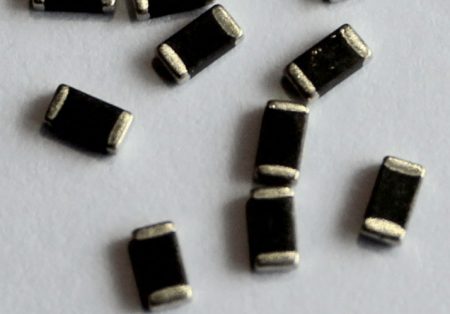- +86-755-23012705
- Building 3, Jinfeng Industrial Park, Fuyong Street, Baoan District, Shenzhen ,China
- [email protected]
Inductance is an energy storage element, and magnetic beads are energy conversion (consumption) element.
Inductances are mostly used in power filter circuits, focusing on suppressing conductive interference. Magnetic beads are mostly used in signal circuits, mainly for EMI.
Magnetic beads are used to absorb ultra-high frequency signals. For example some RF circuits, PLL, oscillator circuits, and ultra-high frequency memory circuits (DDR, SDRAM, RAMBUS, etc.) need to add magnetic beads to the power input part. Inductance are a kind of storage energy element, used in LC oscillator circuits, medium and low frequency filter circuits, etc., whose application frequency range rarely exceeds 50MHz.

The reason for using SMD magenetic beads and inductance: Whether to use SMD magenetic beads or inductance mainly depends on the application. SMD inductance are required in the resonant circuit. While SMD magenetic beads is the best choice when it is necessary to eliminate unnecessary EMI noise.
1.1. The unit of the magnetic bead is ohm, not Hunter. This point must be paid special attention to. Because it is nominally based on the impedance it generates at a certain frequency, the unit of impedance is also ohms. The datesheet of the magnetic beads generally provides frequency and impedance characteristic curves, which are generally based on 100MHz, such as 1000R 100MHz, which means that the impedance of the magnetic beads is equivalent to 600 ohms at a frequency of 100MHz.
1.2. Ordinary filters are composed of lossless reactive components. Their role in the line is to reflect the stopband frequency back to the signal source, so this type of filter is also called a reflection filter. When the reflection filter does not match the impedance of the signal source, a part of the energy will be reflected back to the signal source, resulting in an increase in the interference level. In order to solve this problem, a ferrite magnetic ring or a magnetic bead sleeve can be used on the incoming line of the filter. The eddy current loss of the nuisance ring or magnetic bead to the high-frequency signal is used to convert the high-frequency component into heat loss. Therefore, the magnetic ring and the magnetic beads actually absorb high-frequency components, so they are sometimes called absorption filters.
2. Some suggestions for choosing the core of magnetic beads correctly.
The first three can be judged by observing the impedance frequency curve provided by manufacturer. Three curves are very important in the impedance curve, namely resistance, inductance and total impedance. The total impedance is described by ZR22πfL()2+:=fL. Through this curve, select the magnetic bead model that has the largest impedance in the frequency range where the noise is to be attenuated and the signal attenuation is as small as possible under low frequency. The impedance characteristics of the SMD magnetic beads will be affected under excessive DC voltage. In addition, if the operating temperature rises too high or the external magnetic field is too large, the impedance of the magnetic beads will be adversely affected.
3. Application of magnetic beads and inductance
SMD inductance: Radio frequency (RF) and wireless communications, information technology equipment, radar detectors, automobiles, cellular phones, searchers, audio equipment, PDAs (personal digital assistants), wireless remote control systems, and low-voltage power supply modules.
SMD magnetic beads: Clock generation circuit, filtering between analog circuit and digital circuit, I/O input/output internal connectors (such as serial port, parallel port, keyboard, mouse, long-distance telecommunications, local area network), radio frequency (RF) circuit between radio frequency (RF) circuits and logic devices that are susceptible to interference, the power supply circuit filters out high-frequency conduction interference, and suppresses EMI noise in computers, video recorders (VCRS), TV systems, and mobile phones.






XPCB Limited is a premium PCB & PCBA manufacturer based in China.
We specialize in multilayer flexible circuits, rigid-flex PCB, HDI PCB, and Rogers PCB.
Quick-turn PCB prototyping is our specialty. Demanding project is our advantage.
Tel : +86-136-3163-3671
Fax : +86-755-2301 2705
Email : [email protected]
© 2024 - XPCB Limited All Right Reserve
